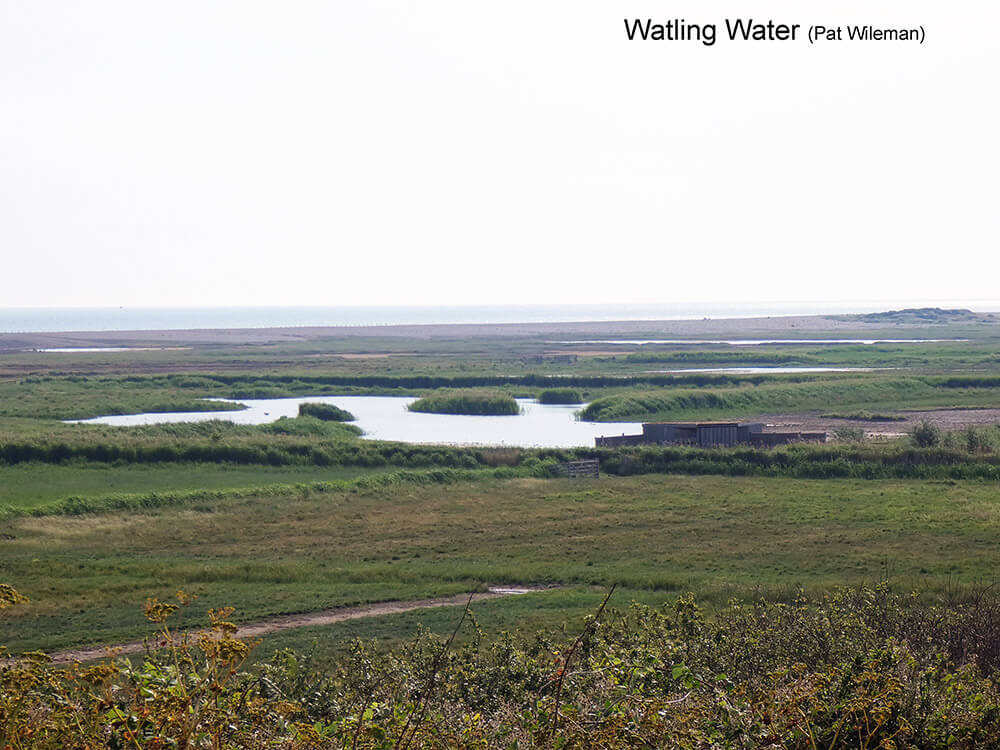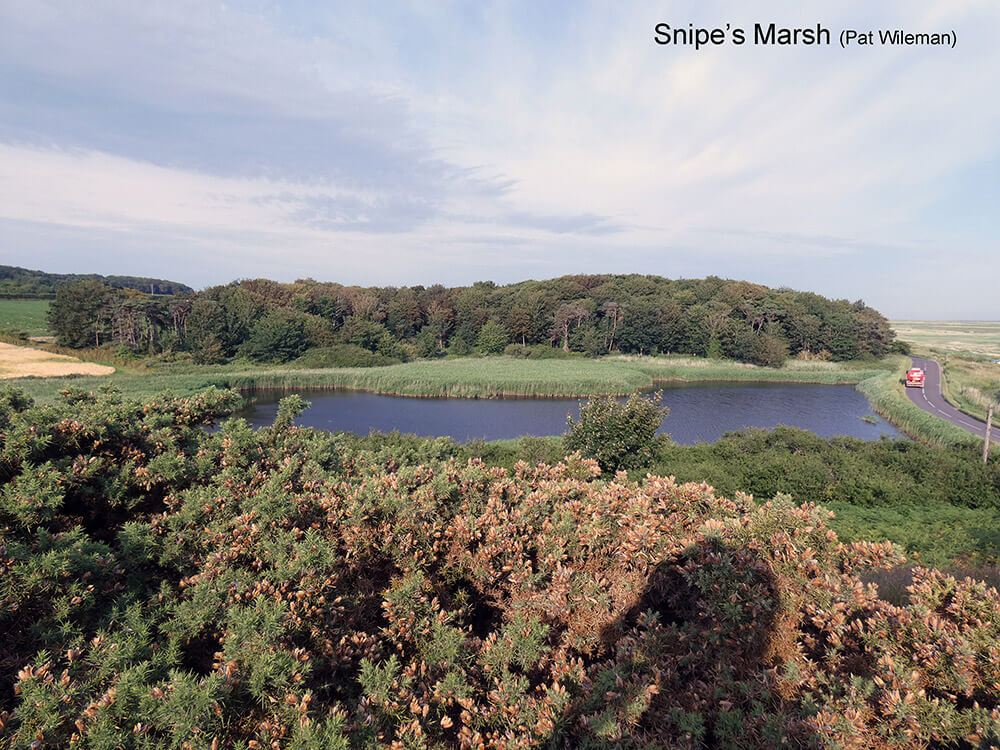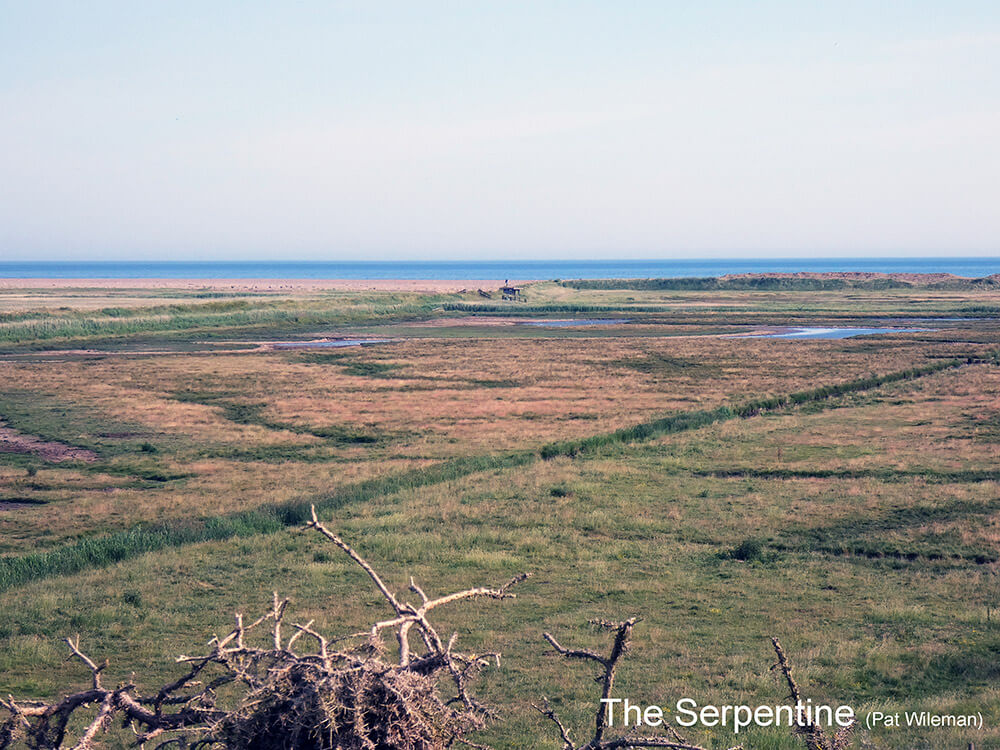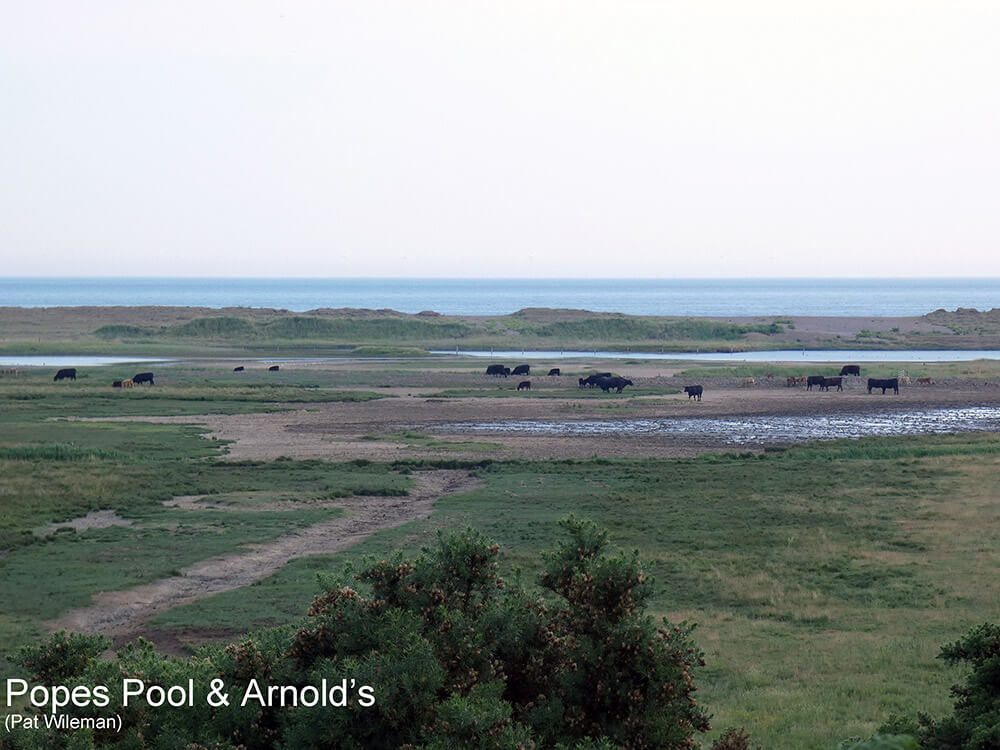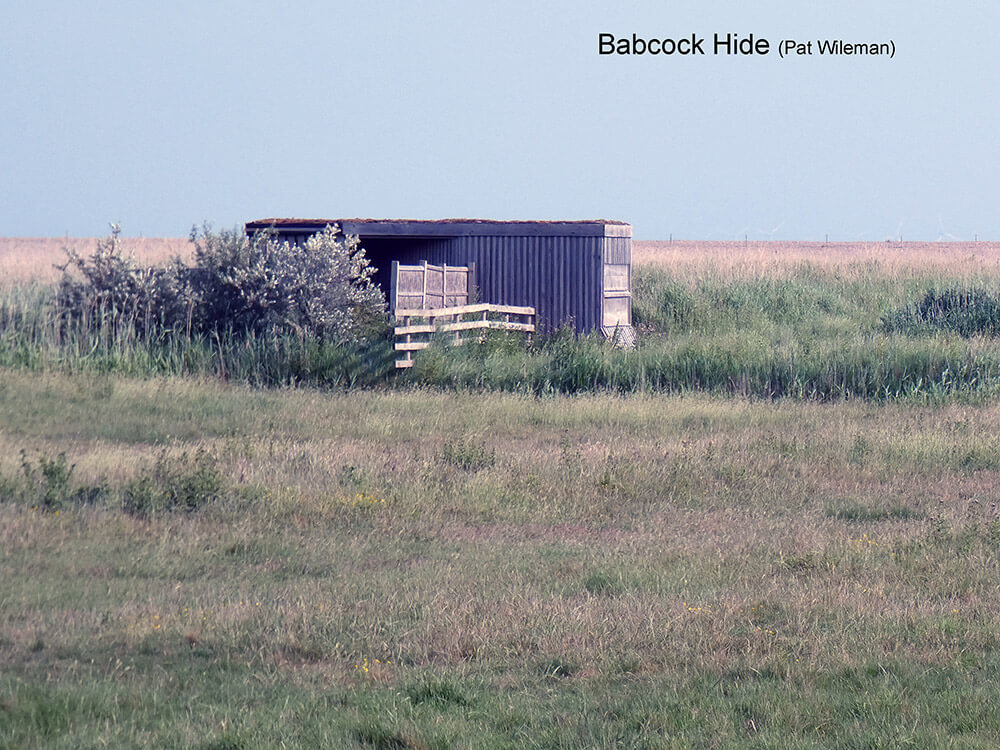Cley East (East Bank to Iron Road)
Much of this area was purchased in 2012 to join the Cley and Salthouse Marshes reserves and make a single coastal reserve of more than 300 hectares. It is made up of wet grazing marshes and reedbed. Arnold’s Marsh at the north of this area is a brackish lagoon owned by the National Trust but managed by NWT. The area can be circumnavigated by public and permitted paths via the grassy Attenborough Walk in the south, the Iron Road in the east then along the shingle and back down East Bank.
The above map can be enlarged by clicking on it. Clicking again and closing it gets you back to this page.
If you would like to download a printable copy click here.
Since the purchase in 2012 this part of the reserve has been renovated with new pools including Watling Water and the Babcock Hide. The water level is now managed with the Serpentine remaining wet all year round.



